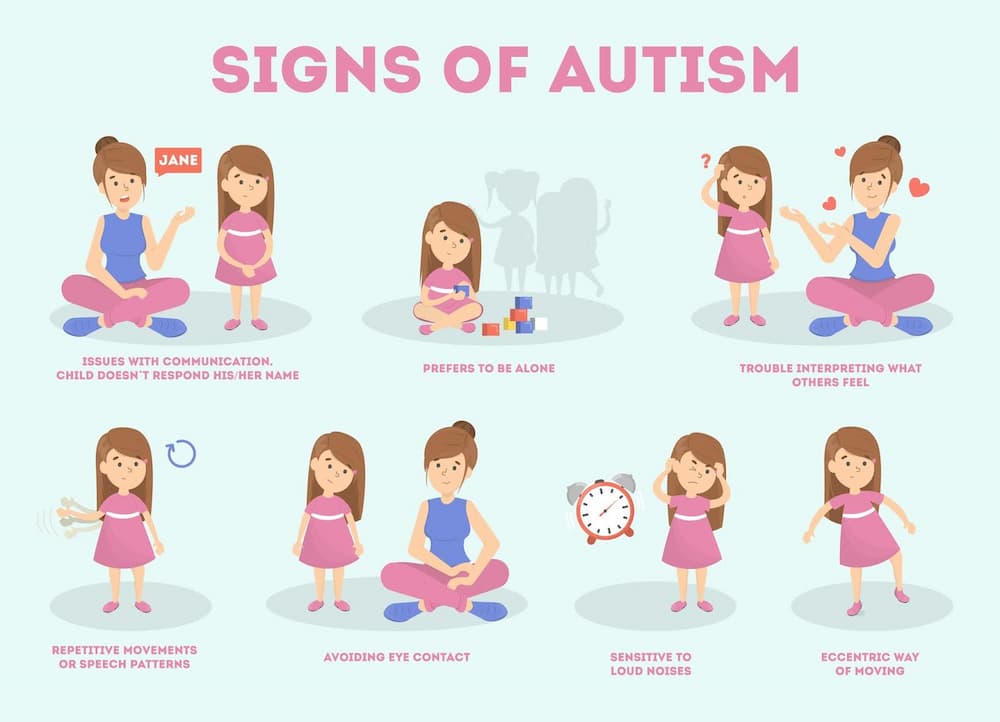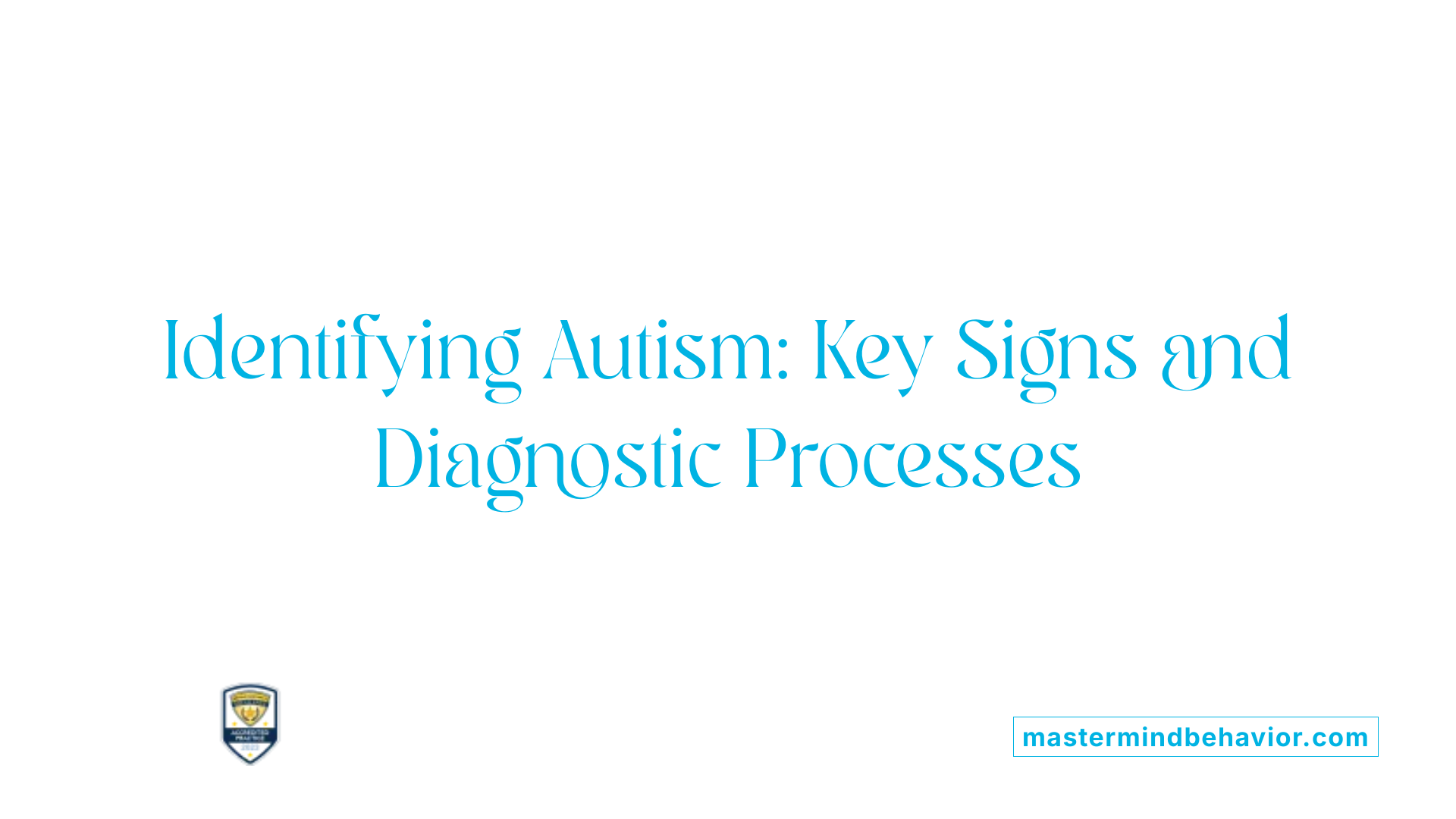Understanding the Impact of Behavioral Autism on Daily Life and Social Interactions
You might not recognize just how deeply behavior autism affects every day life and social interactions. Individuals on the range commonly browse a globe full of interaction difficulties and sensory overload. These difficulties can result in frustration and isolation, influencing their relationships and general health. Recognizing these subtleties is crucial for cultivating encouraging atmospheres. What strategies can we implement to create even more meaningful connections and comprehensive spaces? The solutions could shock you.
Defining Behavior Autism and Its Attributes
Behavioral autism, typically described as autism range disorder (ASD), encompasses a series of problems characterized by difficulties in social interaction, interaction, and repetitive habits. You may observe that individuals with ASD frequently have a hard time to translate social signs, which can cause misconceptions in discussions. They may locate it hard to develop eye contact or involve in little talk, making social circumstances really feel overwhelming.
Communication difficulties can manifest in various ways, from postponed speech growth to a preference for making use of fewer words. Recurring behaviors, such as hand-flapping or shaking, can act as coping mechanisms to take care of stress or sensory overload. These features can profoundly influence life, making it crucial for you to understand and support those with ASD. By identifying these qualities, you can cultivate an environment that promotes approval and encourages effective interaction, aiding people with autism prosper in their day-to-day interactions.
The Spectrum of Autism: Understanding Irregularity in Actions
Autism range condition (ASD) isn't a one-size-fits-all diagnosis; it varies extensively amongst people. You may experience individuals that are very spoken and involve quickly in conversations, while others might prefer solitary tasks or interact non-verbally.
Moreover, the method individuals with ASD react to sensory input can differ significantly; some may be bewildered by intense lights or loud sounds, whereas others prosper in boosting environments. The spectrum additionally consists of differences in social interactions; some individuals might battle to translate social cues, while others navigate social settings with relative convenience. Comprehending this variability is vital, as it helps you value each person's special experience and dressmaker support to their certain requirements, promoting a much more inclusive environment for every person.
Communication Obstacles Dealt With by People With Autism
When you communicate with people on the autism spectrum, you might notice their special interaction obstacles. They frequently face troubles with both nonverbal and verbal hints, which can impact their social communications. Comprehending these obstacles is important for fostering far better links and support.

Verbal Interaction Difficulties
Lots of people on the autism range experience spoken communication troubles that can considerably impact their everyday communications. You might discover it testing to express your thoughts, sensations, or requires clearly. This can bring about aggravation for both you and those around you, as misconceptions happen. You may deal with initiating conversations, maintaining a subject, or recognizing subtleties in speech. Frequently, you may prefer making use of simple language or repetitive phrases, which can limit your capacity to participate in deeper conversations. Your quantity, pace, or tone may not straighten with social assumptions, causing others to misinterpret your objectives. Acknowledging these obstacles can aid you and your assistance network establish strategies to improve communication and foster better connections with others in your everyday life.
Nonverbal Interaction Obstacles
Spoken communication isn't the only challenge individuals on the autism range face; nonverbal communication obstacles can be just as significant. You might find it challenging to interpret body movement, face expressions, and eye contact, which are important for reliable communication. These difficulties can result in misunderstandings or misinterpretations of social hints, making communications really feel complex or overwhelming. You might have a hard time to reveal your very own emotions via nonverbal ways, leaving others unsure of your sensations or objectives. This separate can create sensations of isolation and disappointment. Identifying these barriers is critical for fostering understanding and compassion in your interactions. By addressing nonverbal interaction, you can find methods to boost your social experiences and improve your total lifestyle.
Social Interaction Impacts
Social communications can often really feel frustrating due to the distinct communication challenges encountered by individuals with autism. Recognizing these difficulties can help you locate approaches to improve interaction, such as practicing social skills in risk-free settings or making use of visual help. Comprehending your needs permits you to navigate social interactions with better self-confidence and convenience.
Social Interaction and Partnership Building in Autism
While structure relationships can be challenging for individuals with autism, recognizing their special perspectives and communication designs can cultivate purposeful connections. You may notice that numerous individuals on the spectrum choose straight communication and may struggle with social hints or small talk. By being simple in your interactions, you can aid create an atmosphere where they feel comfy.
Take the time to listen and observe exactly how they share themselves. This insight can assist you in guiding conversations better. Taking part in shared passions can also function as a bridge to deeper links. Whether it's a hobby, a preferred program, or a common passion, these typical strings can open up doors to relationship.
Life Routine: Navigating Difficulties and Strategies
Steering everyday life regimens can be specifically challenging for individuals with autism, especially when unanticipated modifications occur. To browse these obstacles, take into consideration executing aesthetic routines or checklists.
Establishing a regimen that includes sensory breaks can likewise be valuable. You can intend time-outs throughout your day to recharge. It's important to communicate with those around you, letting them understand your needs and choices. This assists develop an understanding atmosphere.
Lastly, method mindfulness techniques to take care of stress and anxiety and anxiousness. Simple breathing exercises or basing methods can make a significant distinction. By including these techniques, you can boost your day-to-day routine and minimize disturbances, making life really feel extra workable.
Strengths and Capabilities of People on the Autism Spectrum
Understanding life routines is just one facet of the autism experience. Several people on the autism range blog here have impressive strengths and abilities that establish them apart. You may find that your focus to information is exceptional, enabling you to master jobs that require precision and focus. Your capacity to think outside the box can bring about ingenious options in different situations.
In addition, your memory skills often next radiate, specifically in locations of rate of interest. Autism Behavioral Therapy. This propensity for keeping information can make you a useful resource in areas like art, technology, or science. You may additionally exhibit solid visual reasoning, enabling you to picture complex concepts and solve troubles creatively
In addition, your distinct point of view on the world can foster compassion and understanding in others, enriching social communications. Welcoming these toughness not just increases your self-confidence however likewise aids others value the diverse talents you offer the table.
Producing Inclusive Settings for Individuals With Autism
Creating inclusive settings for individuals with autism starts with designing sensory-friendly rooms that accommodate their unique demands. You can likewise foster possibilities for social communication, helping to build links and friendships. By making these adjustments, you'll add to a much more inviting environment for every person.
Designing Sensory-Friendly Spaces
While creating sensory-friendly spaces, it's essential to mirror on the one-of-a-kind requirements of individuals with autism. Include quiet areas where people can pull away and reenergize when overwhelmed. Consist of visual routines or clear signs to aid people browse the room confidently.
Advertising Social Communication Opportunities
Designing sensory-friendly areas not only addresses specific comfort however likewise establishes the phase for significant social communications among people with autism. To advertise these communications, develop inclusive environments that welcome participation. Arrange structured activities, like art courses or group games, that encourage cooperation without frustrating sensory input. Use aesthetic help and clear interaction to help everyone engage conveniently. Encourage peer mentoring, coupling people with autism with helpful Continue peers that can assist them through social situations. Furthermore, think about holding routine area occasions that celebrate neurodiversity, cultivating acceptance and understanding amongst all participants. By implementing these strategies, you can boost social chances, helping individuals with autism construct friendships and strengthen their social abilities in a risk-free, welcoming environment.

Often Asked Questions
Just How Can Friends Assistance Somebody With Behavioral Autism?
You can sustain a good friend with behavior autism by holding your horses, paying attention proactively, and appreciating their borders. Participate in tasks they appreciate, communicate openly, and create a comfortable atmosphere where they feel valued and understood.
What Resources Are Offered for Moms And Dads of Children With Autism?
You can check out numerous sources for moms and dads of children with autism, consisting of support system, educational web sites, and regional neighborhood services. Attaching with other parents can likewise offer useful understandings and shared experiences to assist navigate difficulties.
Can Behavioral Autism Adjustment With Time?

Yes, behavioral autism can transform in time. You could observe shifts in communication, social skills, and habits as your youngster grows. Early treatment and assistance commonly play important roles in these developing adjustments.
Exactly How Do Sensory Level Of Sensitivities Impact Daily Life?
Sensory sensitivities can make day-to-day experiences overwhelming. You might have problem with loud noises or intense lights, leading to tension or avoidance. Locating environments that fit your requirements can greatly improve your comfort and overall life.
What Are Common Misconceptions About Behavioral Autism?
You could think behavioral autism just influences communication abilities, but it's more complicated. Many presume individuals do not have compassion or knowledge, which isn't real. Understanding these mistaken beliefs assists foster acceptance and assistance for those on the spectrum.
Behavioral autism, typically referred to as autism range problem (ASD), incorporates an array of problems identified by obstacles in social interaction, communication, and repeated behaviors.Social interactions can commonly really feel frustrating due to the unique communication difficulties dealt with by individuals with autism.Designing sensory-friendly areas not only addresses private convenience however likewise sets the phase for meaningful social communications amongst individuals with autism. Encourage peer mentoring, pairing individuals with autism with encouraging peers that can lead them via social circumstances. By carrying out these approaches, you can enhance social opportunities, helping individuals with autism develop relationships and reinforce their social skills in a safe, welcoming atmosphere.